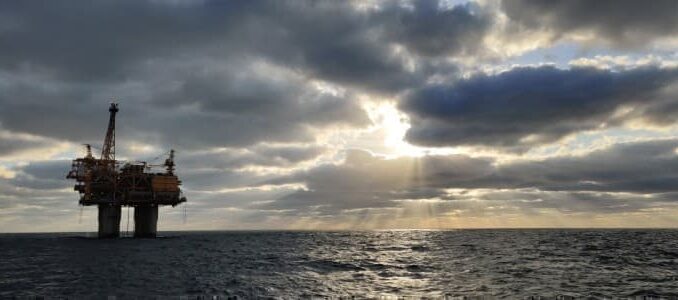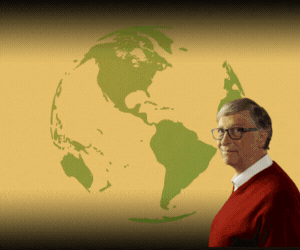
In an era where global energy dynamics are shifting, South America is emerging as a powerhouse in the oil sector, poised to drive significant growth in non-OPEC+ oil supply through 2030. According to recent analysis from Rystad Energy, the region will add over 560,000 barrels per day (bpd) of crude and condensate this year alone, surging to more than 750,000 bpd by 2026.
This makes South America one of the few areas, alongside parts of the Middle East outside OPEC+, capable of delivering such substantial increments. As U.S. shale production growth slows and global liquids demand remains robust—projected to peak at around 107 million bpd in the early 2030s—the continent’s offshore and shale developments are set to play a pivotal role in balancing world markets.
For investors, this translates to opportunities in cost-competitive projects, but also risks tied to exploration slowdowns and market volatility.
Key Drivers of South America’s Oil Boom
South America’s ascent is fueled by a combination of deepwater offshore projects and shale plays, with investments hitting a decade-high of over $46 billion last year and expected to climb 10% to nearly $50 billion annually through the 2030s.
The region has already contributed significantly to global conventional production and new discoveries over the past decade, with offshore fields started since 2020 accounting for over 65% of its conventional output by 2030.
Brazil, Guyana, and Argentina stand out as the top three fastest-growing producers, identified by the International Energy Agency (IEA) among the leading non-OPEC growth engines.
Brazil: As the region’s heavyweight, Brazil’s focus on greenfield and brownfield offshore developments, particularly in the pre-salt basins like Buzios, positions it for sustained growth. Production is supported by floating production, storage, and offloading (FPSO) vessels, with cumulative conventional greenfield capital expenditure (capex) from 2020-2030 projected at $197 billion, much of it concentrated here.
Guyana: The Stabroek Block has unlocked over 13 billion barrels of recoverable resources, with four FPSOs already operational and more in the pipeline. Guyana’s output has skyrocketed to over 630,000 bpd, making it a standout in non-OPEC supply.
Argentina: The Vaca Muerta shale formation is driving cost-competitive production, with crude output rising to 815,000 bpd despite challenges like weak prices and infrastructure bottlenecks.
As of March, Vaca Muerta alone was producing 447,000 bpd.
Emerging players like Suriname, with its $10.5 billion GranMorgu field set to come online by 2028, and potential in Colombia, Ecuador, Venezuela, Trinidad and Tobago, and Peru, add further upside.
Together, these nations are forecast to drive more than 80% of global oil production growth outside OPEC+.
Major Oil Companies Operating in Key Non-OPEC+ South American Areas
A host of international and national oil companies are capitalizing on these opportunities, investing heavily in exploration and development. Here’s a breakdown of the primary players in the main regions:
|
Region/Basin
|
Major Companies Involved
|
Key Activities/Projects
|
|---|---|---|
|
Brazil (Pre-Salt/Offshore)
|
Petrobras (state-owned, lead operator), Shell, TotalEnergies, Equinor
|
FPSO deployments in Buzios and other fields; greenfield investments exceeding $100 billion cumulatively through 2030.
|
|
Guyana (Stabroek Block/Offshore)
|
ExxonMobil (operator, 45% stake), Hess (30%), CNOOC (25%)
|
Over 30 discoveries; four FPSOs producing; targeting 1.2 million bpd by 2027.
|
|
Argentina (Vaca Muerta Shale)
|
YPF (state-controlled), Chevron, Shell, ExxonMobil, Pan American Energy, Tecpetrol
|
Shale drilling and infrastructure expansion; output growth to 447,000 bpd as of March.
|
|
Suriname (Offshore)
|
TotalEnergies (operator), APA Corporation
|
GranMorgu field development with $10.5 billion capex; first oil by 2028.
|
These companies are drawn to the region’s geological potential and supportive fiscal regimes, with ExxonMobil notably re-entering Trinidad and Tobago for ultra-deepwater exploration, potentially investing over $20 billion if successful.
Breakeven Costs: A Competitive Edge
One of South America’s biggest attractions for investors is its low breakeven prices, making projects resilient to oil price fluctuations. These costs—the price per barrel needed to cover expenses and generate returns—are notably competitive compared to many global basins.
|
asin/Area
|
Average Breakeven Price
|
Notes
|
|---|---|---|
|
Guyana Offshore (Stabroek Block)
|
$30.25/bbl
|
For the first four developments; projects remain profitable even at $40/bbl.
energy-analytics-institute.org
|
|
Argentina Vaca Muerta Shale
|
$36/bbl
|
Comparable to U.S. shale; supports rising output despite infrastructure challenges.
oilprice.com
|
|
Brazil Offshore (Pre-Salt)
|
$35-45/bbl (estimated)
|
Cost-competitive deepwater projects; driven by technological efficiencies in FPSOs.
|
|
Suriname Offshore
|
$40-50/bbl (projected)
|
Emerging deepwater; similar to Guyana model with high potential returns.
tradingview.com
|
These low thresholds—often below $40/bbl—position South American barrels as “cost-competitive even at low prices,” enabling sustained investment amid volatile markets.
Implications for Investors
For investors eyeing the energy sector, South America’s trajectory offers compelling prospects. The region’s ability to offset U.S. shale deceleration could stabilize global supply, potentially supporting oil prices in the $70-90/bbl range through 2030 amid strong demand.
Stocks in companies like ExxonMobil, Petrobras, and Chevron could benefit from production ramps and export growth, with Guyana and Brazil alone contributing to Non-OPEC+ additions of 1.6 million bpd in 2025.
However, challenges loom. Discoveries in Guyana hit a multi-year low of 420 million barrels last year, signaling the need for renewed exploration to sustain output beyond 2030.
Above-ground risks, such as project delays from oversupply or geopolitical tensions in Venezuela, could impact timelines. In Argentina, Vaca Muerta’s boom faces hurdles from high costs and underdeveloped pipelines.
Overall, prudent investors should focus on diversified portfolios emphasizing low-breakeven assets. With South America set to anchor Non-OPEC+ supply, the region represents a strategic hedge against energy transition uncertainties, promising solid returns for those navigating its opportunities wisely.








